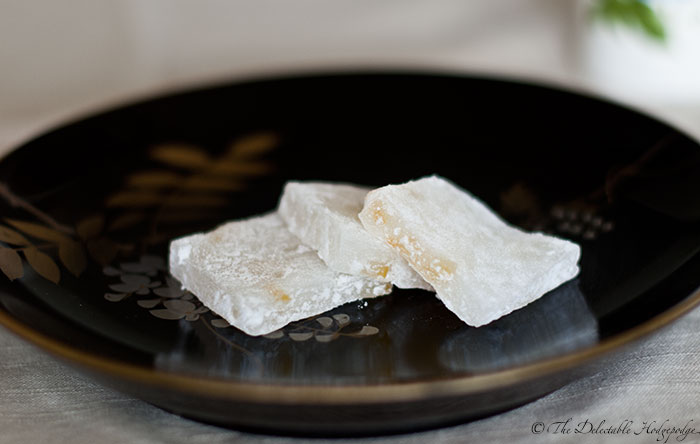
Yuzu Mochi
| Ingredient | 10 Daifuku | 10 Daifuku |
|---|---|---|
| shiratamako (sweet rice flour) | 2⅓ oz. | 65g |
| water | ¼ cup + 1 Tbsp. | 100ml |
| sugar | 2½ oz. | 70g |
| candied yuzu peel | ¼ cup | ¼ cup |
| potato or corn starch | 2 Tbsp. | 20g |
This simple confection adds zesty candied yuzu rind to lightly sweetened, soft mochi squares. The result is a playful combination of citrus flavor and chewy texture. The only hard part about making them is actually finding yourself candied yuzu rind—the fragrant, orange-like fruit is nearly unknown in the English-speaking world.
Preparation
- Chop the candied yuzu rind into small pieces.
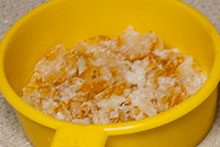
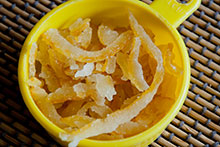
 Dust the bottom of a smallish baking pan (like a brownie pan) with potato or corn starch to prevent it from sticking.
Dust the bottom of a smallish baking pan (like a brownie pan) with potato or corn starch to prevent it from sticking.
Directions
- Mix ingredients.
Put the rice flour and sugar in a microwavable bowl and add water a little at a time, whisking constantly until completely combined. 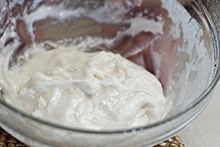 Cook in microwave.
Cook in microwave.
Cover and microwave on high for one minute. Stir well, cover again, and microwave for another minute. It should become somewhat transparent when cooked.- Add yuzu.
Add the candied yuzu rind bits and stir until well mixed.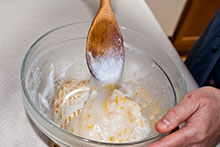
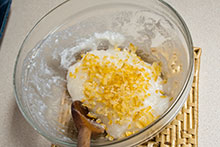
- Stretch out and cut into pieces.
Drop the dough onto your floured pan. Dust the top of the dough with more starch and use your fingers to stretch the dough out into an even sheet covering the bottom of the pan. Let it cool, and then cut it into bite-size squares with a sharp knife. You can also refrigerate it, covered, for a half-hour after it has cooled to make it easier to cut.
Notes
- The mochi squares will keep for at least two or three days in a sealed container in the refrigerator, but on account of moisture from the yuzu it will start to sweat relatively quickly at room temperature.
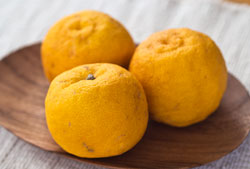 Yuzu is an Asian citrus that isn’t generally eaten straight; instead, the juice or very fragrant peel is used in cooking, as in this recipe. The yellow fruit is about the size and shape of an orange, and the unique flavor could be compared to a cross between orange and grapefruit. Although extremely cold-tolerant, they have yet to catch on in the United States or elsewhere, so the plant and fruit are both quite difficult to find; try a Japanese specialty market for candied yuzu rind.
Yuzu is an Asian citrus that isn’t generally eaten straight; instead, the juice or very fragrant peel is used in cooking, as in this recipe. The yellow fruit is about the size and shape of an orange, and the unique flavor could be compared to a cross between orange and grapefruit. Although extremely cold-tolerant, they have yet to catch on in the United States or elsewhere, so the plant and fruit are both quite difficult to find; try a Japanese specialty market for candied yuzu rind.- If you’re interested in trying your hand at growing your own yuzu, they’re known as the most cold-tolerant of any citrus, happily growing even in central mountain regions of Japan that regularly see temperatures below freezing and some snow in winter. Though uncommon, they are available from some nurseries in the United States, including a dwarf version from Four Winds Growers in California, where we got ours. The picture here shows some unripe fruit on our tree.

